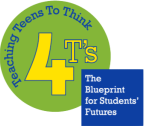First is the obvious – clean up your profiles. Delete frat party photos, profanities, links to offensive articles, and ranting, extreme statuses. Also, consider the picture you use. It should be professional and recent. It should give a competent and friendly impression; to see if your photo is accomplishing this, check out PhotoFeeler. You should be consistent with your profile picture as well as your name across platforms. “It can be tempting to pick a punchy nickname or handle when making your profiles but, as much as possible, use your real name. This both looks more professional and means that people will be able to find your profiles when they search for your name. If you have a common name or often go by a nickname, at least choose a consistent name you’ll use across platforms, and try to have your real name somewhere on each account.” Also, your social media accounts should link to each other. Consider providing a link to your personal website or blog on LinkedIn and in your Twitter profile.
LinkedIn can be much more than a place to provide the long version of your resume. It’s about building connections. You might do this by updating your status regularly, linking to content that is relevant in your industry, or joining groups that will connect you to new professionals. LinkedIn allows you to learn about companies that intrigue you or monitor job postings. As for connecting on LinkedIn, you should generally follow the rule to only connect with people you’ve interacted with in the past. This is a broad definition, however, ranging from your employer of several years to a person you met at a conference. You should tailor the message in the invitation to the relationship. The generic invitation will be fine for people you are familiar with but you should personalize it if the person could use context for why you’re trying to connect with them. As for connecting with hiring managers during the application process, you should avoid sending an invitation. That comes off as a bit presumptuous according to an article entitled 45 Things Successful Job Seekers Do on Social Media.
Twitter gives you the opportunity to brand yourself even with the limited character count. A marketing manager at IdeasTap suggests, “Try tweeting about current affairs relating to the sector you want to work in to help you to build a relevant following. Follow the companies you would like to work for and put yourself on their radar by interacting with them (responding to and retweeting their tweets).” For your profile, a social marketing consultant at Career Moves Group says, “I'd say things to avoid are motivational quotes or anything that anyone else has posted. Be concise and unique.” You’re using social media to build an image of yourself that appeals to potential employers. Make sure it’s a professional, intelligent, creative image you’re putting out there. Make your account really speak to your personality. “Twitter is a great place to establish yourself as a thought leader in your industry. So, focus less on your personal accomplishments and more on sharing great articles about your field, commenting on news in your industry, and having a conversation with other major players.” Think specifically about your industry. For example, if you’re in the music promotion industry, it’s probably a good sign if your account shows that you’re grabbing drinks and checking out bands fairly often. The same wouldn’t hold true for a teacher. Be conscience of your target audience and just make sure your social media doesn’t send up any red flags to the people who are trying to decide if they want to work with you. Make your accounts private if they could make you appear to be a loose cannon. Keep these tips in mind, but most importantly, be yourself on social media in a positive, professional way. It could help you land that dream job.
-Samantha Phillips
How do you use your social media to benefit your career, or what have you learned to avoid online?

 RSS Feed
RSS Feed